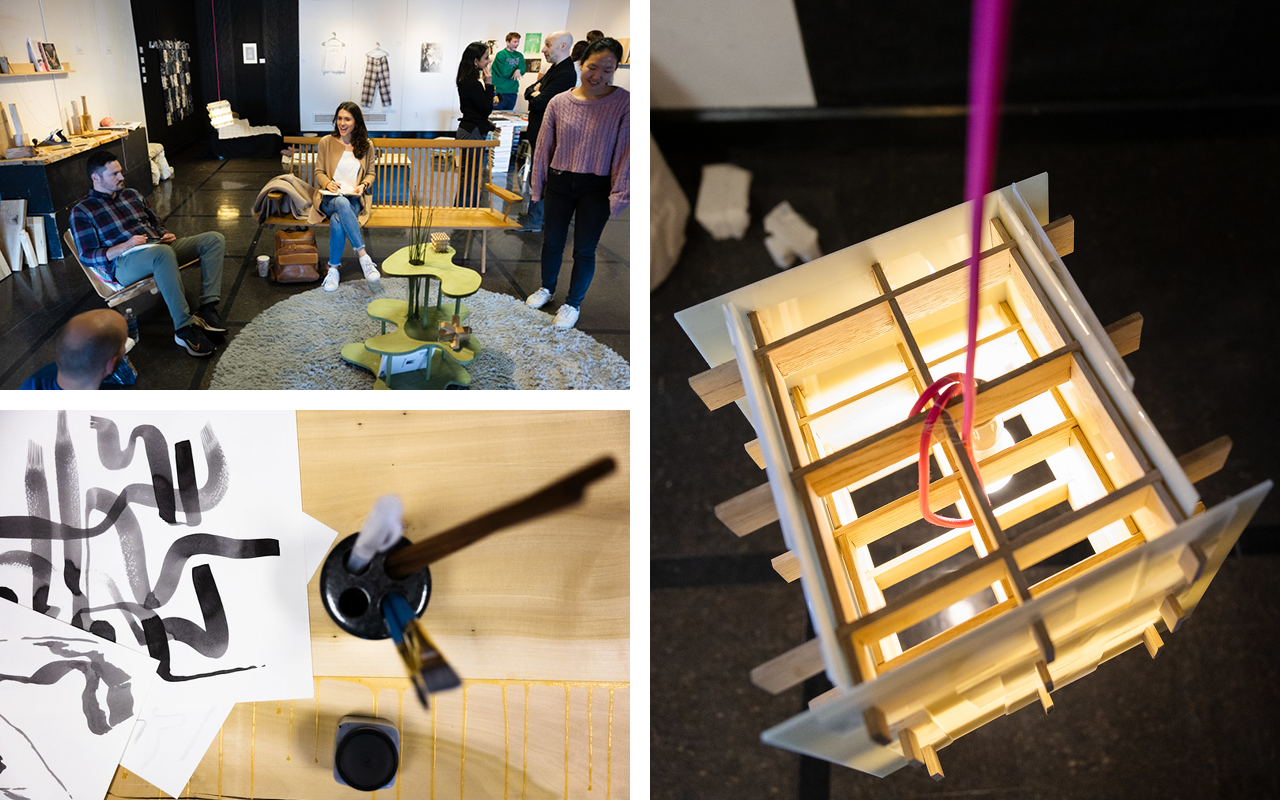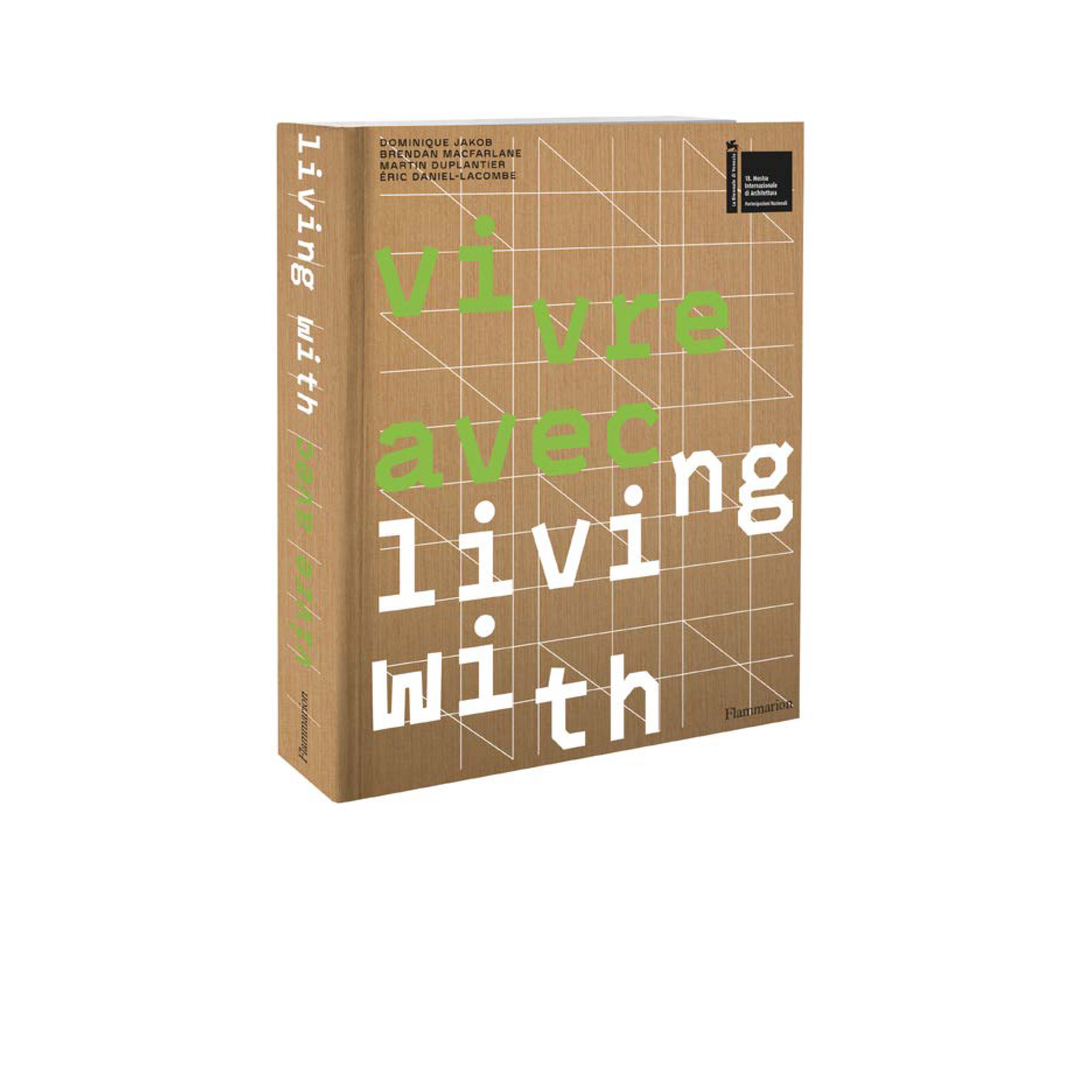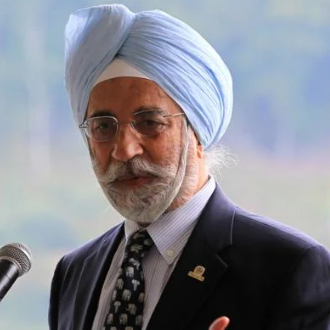
Craft Theorist Glenn Adamson Inspires Future Thinking at the School of Architecture
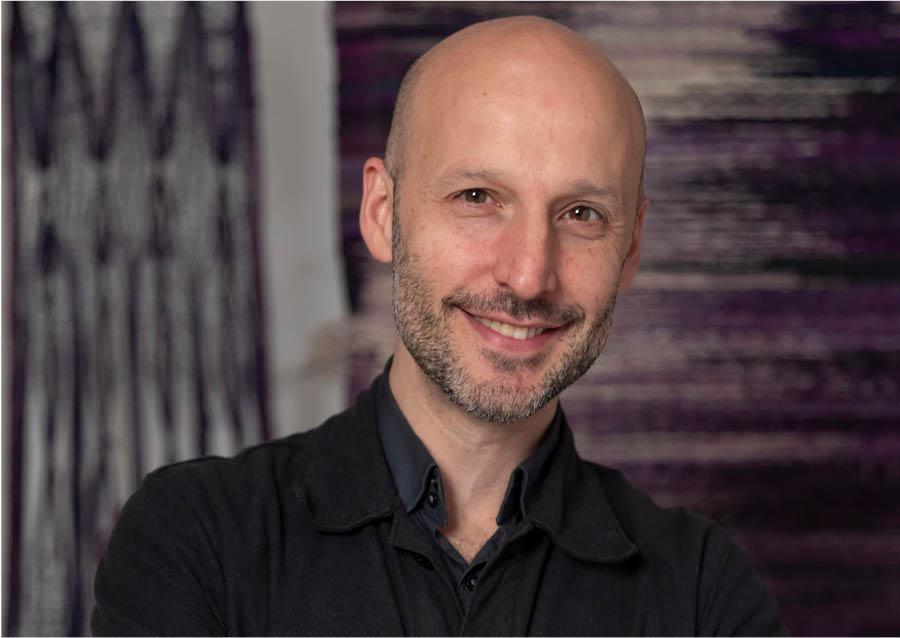
At the start of every spring semester, students at the School of Architecture file into Campbell Hall’s auditorium for what’s been a longstanding and popular annual rite—the anticipated Michael Owen Jones (MOJ) Lecture. Named for a beloved A-School alum, the family and friends of Michael Owen Jones (BS Arch '85) have generously supported the memorial lectureship for the past 31 years, with new cycles of architecture students organizing the program annually. This successful and enduring initiative spotlights trailblazing individuals who inspire new thinking in design and beyond.
In January 2024, the School of Architecture hosted writer, curator, and historian Glenn Adamson as the MOJ guest. His scholarship on craft theory framed the MOJ lecture, "Crafting Tomorrow: Architecture in Future Tense," and a companion exhibition called Almost Useful, on view in the Elmaleh Gallery until February 17. Organized by Bhargavi Murthy (M. Arch ‘24), Sasson Rafailov (PhD in the Constructed Environment), Tabi Summers (BS Arch ‘24), and Madeleine Zahn (M. Arch ‘25), the MOJ committee dedicated over six months of planning to the multifaceted program. Below, they shed light on how their vision was realized:
“When we began to plan this year's MOJ, we were keen to invite interdisciplinary conservations to the A-School. As architecture students, we were inspired to find innovative ways to bridge the gap with other materially-driven disciplines. Through conversations with our peers, ecology and craft were identified as key themes of interest. We thought Glenn would be a good fit because of his commitment to developing theories of craft that extend into multiple disciplines, including architecture.”
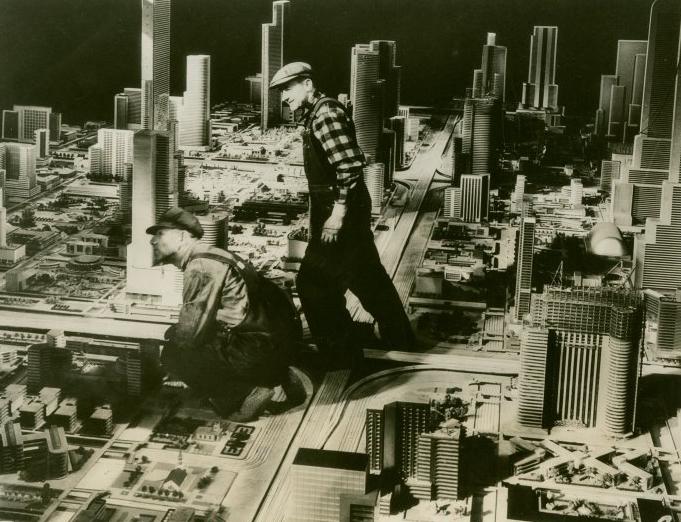
Adamson’s "Crafting Tomorrow" lecture was the centerpiece to his UVA visit. Drawing largely from his forthcoming book A Century of Tomorrows: How Imagining the Future Shapes the Present (Bloomsbury, 2024), Adamson discussed craft’s role in shaping future-thinking. As a term and process so typically associated with the past and traditional forms of making, "craft is an important mode of operation by which the future is considered,” argued Adamson, who cited the prototype as a great example. For the audience of design and planning students, Adamson was speaking their language. Weaving together case studies, from the 1939 New York World’s Fair Futurama by Norman Bel Geddes and Albert Kahn, to the wood-encased Apple I computer by Steve Jobs (to name only a few), Adamson provided a riveting crash course on how future imaginaries of the 20th century are shaping present-day culture.
The morning following Adamson’s inspiring lecture, he sat down with a dozen individuals in Campbell Hall to dive deeper into the theories grounding A Century of Tomorrows. Over coffee and bagels, the informal setting lent itself to an open conversation about theoretical underpinnings of the utopian ideal. Adamson generously unpacked parts of literary critic and Marxist political theorist Fredric Jameson’s influential 2005 work, Archaeologies of the Future: The Desire Called Utopia and Other Science Fictions (Verso). Among questions and comments by students of architecture, architectural history, art history and more, Adamson wove connections between science fiction, 3D printers, the migration of antiquities across borders, the war machine, and collective memory.
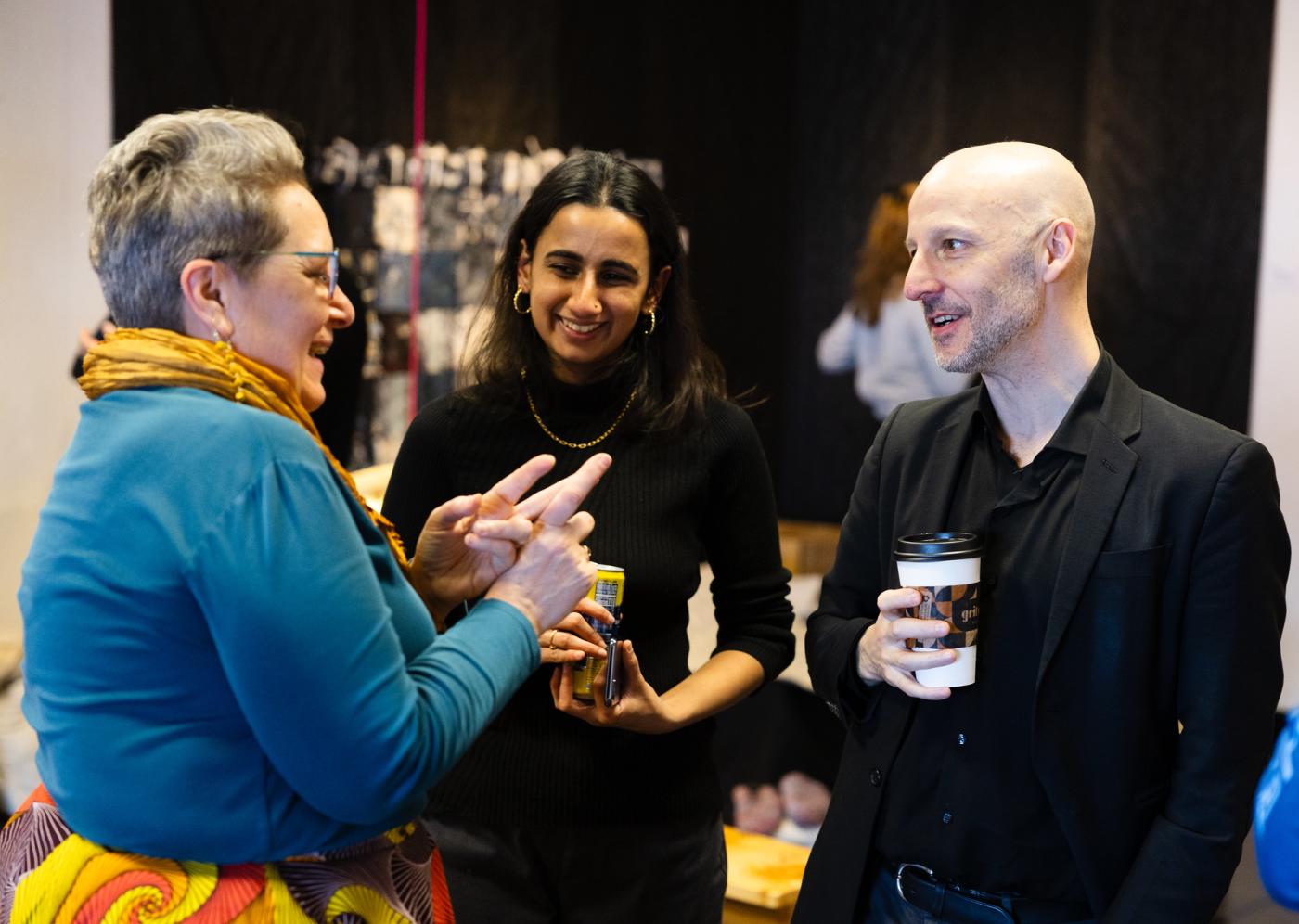
This year's MOJ programming successfully engaged different voices at the School of Architecture and the university, as exemplified by the exhibition Almost Useful, curated jointly by the MOJ committee and Adamson. The show features two dozen works, including textiles, objects, furniture, and works on paper by 24 students. The collection of prototypes or what the MOJ team calls “objects at the edge of utility,” highlight the importance of materials, making, and creative processes, however imperfect the result.
“It was gratifying to us that this year's events evoked old memories as well as new ideas,” said the MOJ committee. “Our theme was reminiscent of [Michael Owen Jones’] own experimental furniture. And, many of the conversations between Glenn and students revolved around aspirations and questions for the future that are being discussed in pockets across the A-School, like how do we get beyond human-centricity?” Perhaps, the only way to answer this question is to start making something.
